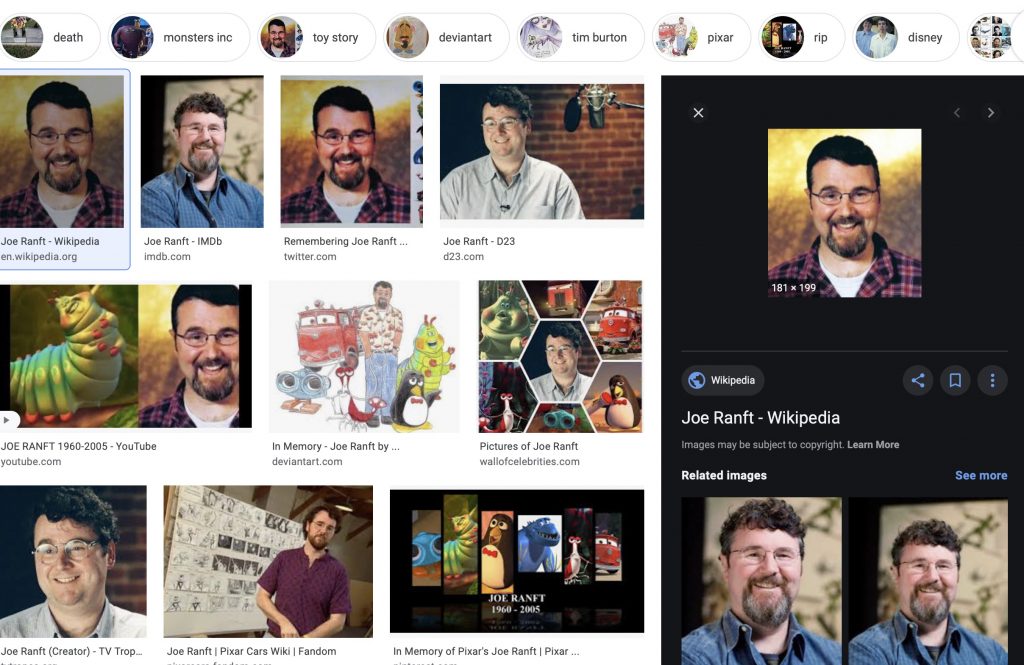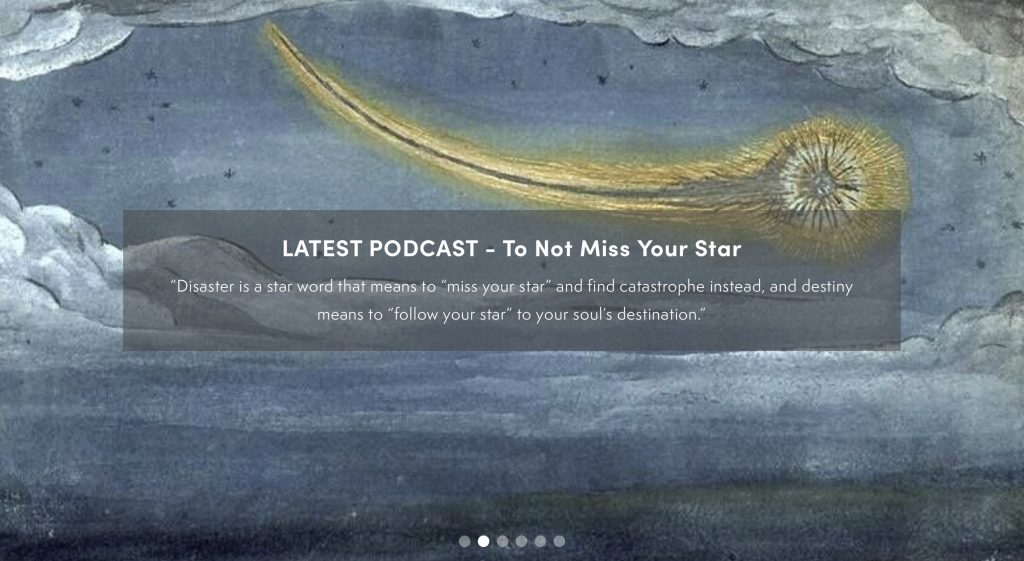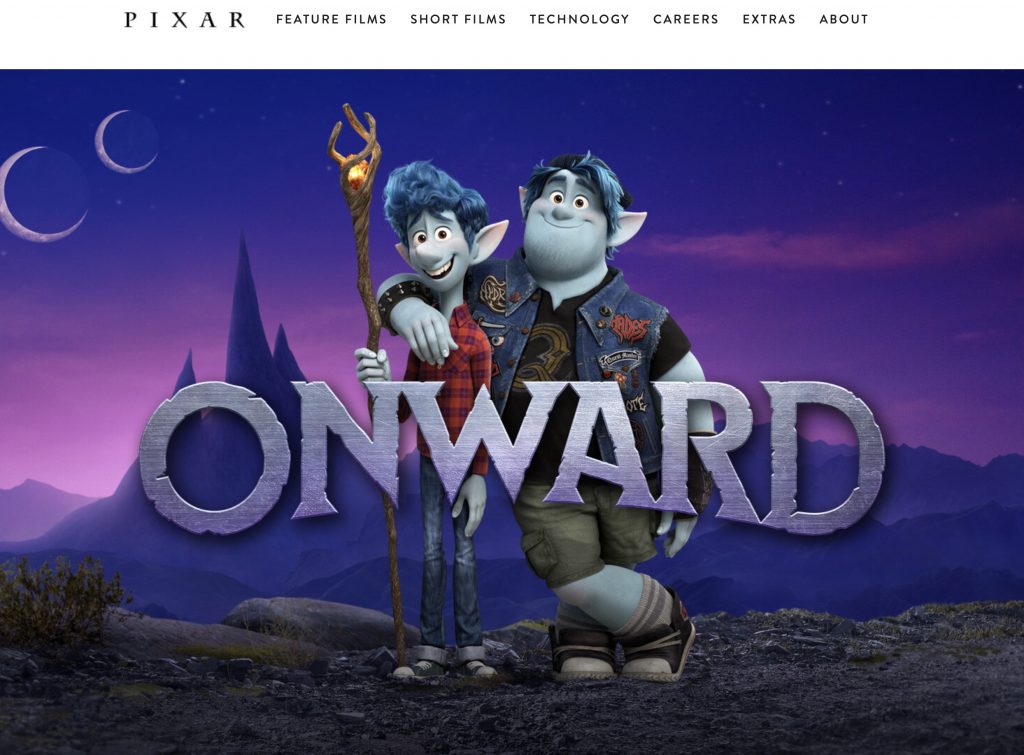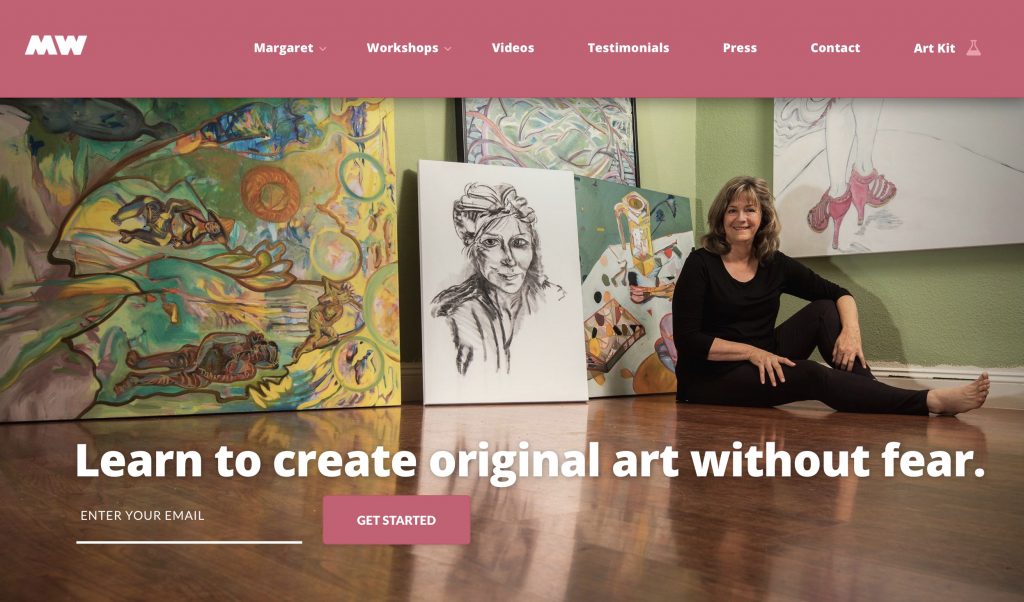Pixar’s Joe Ranft’s 2 Rules for Living
Many years ago I attended Joe Ranft’s memorial service with my sweetie, who, at that time, worked at Pixar with Joe on such films as Monsters Inc. and Cars (soon to be released). Joe was always generous and kind to my sweetie and to me — and it turned out that he was that way with everyone. Joe was the heart and soul of all the Pixar films. He also worked on The Nightmare before Christmas and James and the Giant Peach and many other films on which he left an indelible mark. He was a storyteller in his work and in his life.

Joe Ranft Pixar Animation Studios: Creativity Rules
When one longtime friend of Joe’s asked all the guests who considered Joe their best friend to raise their hands, half the people put their hands up. After a big heart and hilarious sense of humor, what people mentioned most was that Joe Ranft was a storyteller, and that everyone loved hearing his stories.
Joe had 2 sayings on his office door that he lived by:
-
The journey is the reward.
-
Trust the process.
I think it’s easy to forget these things as so many of us are overachievers or hyper demanding of ourselves (myself included), working in a world that glorifies speed. It’s ironic that it takes many slow moments to help us go fast.
Make 10,000 bad drawings.
At the reception after the service we were talking to Eric Frierson, the sole survivor in the car crash, about Joe and what he meant to the community of men he was working with in Michael Meade’s organization, Mosaic and Ed Catmull, the President of Pixar joined us. When Eric found out who Ed was (“Oh, YOU’RE Joe’s boss!”) he said, “I’m glad to meet you because I’m a graphic artist and I want to talk to you soon.” Ed said, “Take Joe’s advice. Do 10,000 bad drawings first. Get them out of your system. After you’ve done that, come talk to me.”

Michael Meade Extraordinary Storyteller
Become a master of mistakes.
This is another thing that we forget: to become great mistake makers. To be unafraid to do crappy work. To make a big mess of things so we can discover something in the muck of it all — or not. To follow the harebrained idea even if it leads to a dead end. To get the 10,000 bad drawings out of our system. To play in the waters of failure without a life jacket. To “Trust the process.”
Joe was a master of mistakes. You have to be to consistently come up with the kind of creative ideas and great stories he fostered and hatched. Once you free yourself up from fearing mistakes you’ll have a lot of energy for other things, other thoughts, other people. Busy as he was Joe made time for people. Lots of them.
Speaking from the podium one longtime friend of Joe’s talked about one of the last times they were together. They were sitting on the couch talking about the direction of Joe’s life. The friend asked, “How’s it going?”
He said he was at a place where he now had a hand in, and was overseeing, all the films at Pixar, was comfortable financially, and could devote more of his time to doing community service. He was working closely with mythologist, drummer, and teacher Michael Meade who devotes himself to working with gangs, inner city kids, prisoners, men from difficult circumstances trying to live better lives, and people interested in living deeply.

Michael Meade tells great stories, Storyteller, Mythologist, Drummer
Hearing this renewed my interest in doing more community service with youth. Meade, in his workshops, often talks about needing more elders in our midst and about developing ourselves into those elders, worthy of the respect of youth. I want to grow into being one of the worthy ones.
Do good works in the world.
Toward the end of the service, Joe’s wife Su said, “If you want to honor Joe, I have only one request: Do good works in the world. Find something you can be passionate about. Throw yourself into it. Don’t just think about it. Do it.”
I’m taking her advice, and Joe’s example to heart.
NOTE: COVID has given us all ample opportunity to do good work. If your company can donate time, money, food, masks, or other necessary items to organizations that can help, now is the time.
Pixar’s Joe Ranft’s 2 Rules for Living
Joe Ranft knew how to live. Considered the heart of Pixar’s films his sense of humor and gift for storytelling were legendary throughout the industry and throughout the world. How can you apply his life lessons to promoting yourself, your product, business, service or cause? Storytelling is key along with two others. Learn to tell great stories.
1. The journey is the reward.
I want it now. I can’t wait. Hurry, hurry. Show me the money. What do I get? Life will be better tomorrow.
Stop.
What about now?
What about doing without knowing what will result, just for the fun of it?

Pixar Animation Studios: Onward
Do what feels good without worrying about the goal.
This is what Kathan Brown, a former client of mine who is legendary in the print making/etching world, and who has worked with such artists as John Cage, Richard Diebenkorn, and Richard Tuttle, writes in the opening of her book, Ink, Paper, Metal, Wood:
“Thirty-three years ago (now 47) when I founded Crown Point Press I didn’t have a clear plan, but I liked the feel of ink on my hands and the look of it after I’d printed it onto paper using an etching press. I liked working with polished copper, aromatic liquid tar, rosin from pine trees, and wax, heated and rolled out thin — poetic materials from another age.”
She goes on to say that she started the press for her friends who were painters and sculptors and how they taught her ways to make sense of life in this day and age.
At that time our troops and the Iraqi people continued to die, hundreds have died or were in desperate straits in the wake of Hurricane Katrina, when depression, obesity and anxiety have become as commonplace as the housefly, and now COVID —how does what you do help us make sense of the world?
And while the journey is the reward, Kathan says, “You can’t just sit around and enjoy. You also have to look for the next step.”
2. Trust the process.
Process is often mysterious, frustrating and slow. Process is also miraculous, easy and instant. They are part of the same continuum.

Margaret Welty artist, drawing free expert
Margaret Welty is a great example of trusting the process. She’s an artist and gifted teacher who had her own cable TV show and gives workshops to set your inner (or outer) artist free. I love the phrase on her website: “No Talent? No Problem! Drawing Free allows anyone—even YOU to start drawing NOW.”
Even me? With Margaret holding my hand I will trust the process and give it a go. No doubt Joe Ranft would cheer me on.
Check out our PR and Media Training Workshop to Jumpstart your Publicity

Like what you read? Share it!
Disclosure: Some of the above may be affiliate links that I will be compensated for at no cost to you. They are products or services I’ve either used, vetted or trust. Enjoy!
WE THOUGHT YOU’D ALSO LIKE THESE POSTS

























